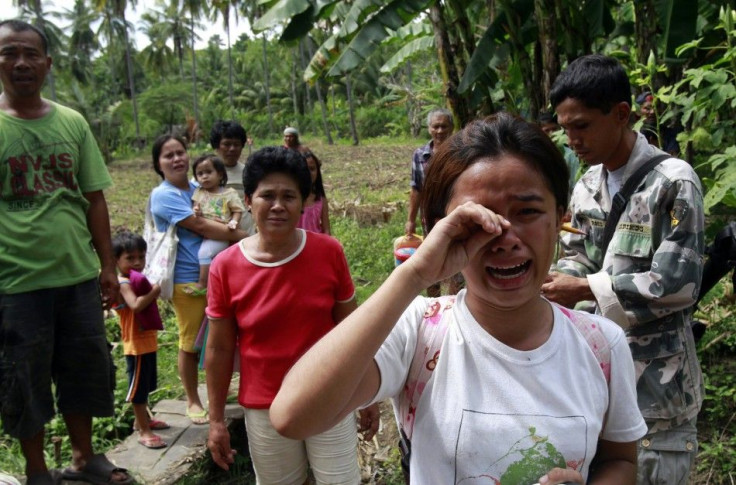Philippines Earthquake 2012: Death Toll Keeps Climbing

The death toll from the earthquake that struck the Philippines on Monday climbed to 48, while dozens of people remain missing.
However, that figure is guaranteed to rise as rescuers reach more remote parts of the devastated country.
The magnitude-6.9 quake also damaged buildings on the central Philippine island and triggered massive landslides.
The tremor also destroyed bridges on Negros Island, making it impossible for rescue officials and soldiers to reach isolated regions.
According to the Associated Press, the bulk of deaths recorded thus far occurred in Planas village, a part of Guihulngan in Negros Oriental, where scores of houses have been buried by debris.
Officials are gravely concerned about the final death toll, considering the unknown number of people missing. Some parts of the island have been cut off for days.
Ernesto Reye, the mayor of Guihulngan, told AP by phone: We have no water and power because electric posts were toppled. Many of our roads were damaged, including bridges, and stores are closed. We're isolated.
Philippines President Benigno Aquino III, who will survey the damaged area by airplane on Wednesday, has ordered air force helicopters and navy and coast guard vessels to help rescuers look for survivors.
We have dispatched two ... choppers from Western Mindanao Command to help in the relief operations, military spokesman Col. Arnulfo Burgos Jr. told Philippines media.
Ver Neil Balaba, operations officer at the regional Office of Civil Defense, told BBC: The most urgent needs now are water, tents and food.
The last major earthquake to strike the Philippines killed 78 people on Mindoro Island in 2004. Prior to that, a magnitude-7.7. quake killed 2000 in Northern Luzon region.
The Philippines are prone to both earthquakes and volcanic activity, as it is situated in the Pacific “Ring of Fire.”
© Copyright IBTimes 2024. All rights reserved.





















